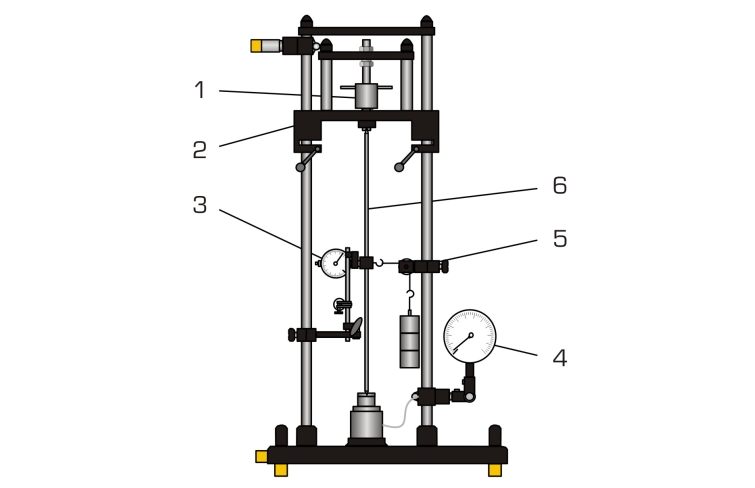In engineering mechanics, loss of stability is known as buckling. The bar axis laterally deflects under the effect of compressive forces and with increasing load until it suddenly and violently fails, just before the fracture strength is reached. The stresses in the bar are often still in the elastic region.
WP 120 investigates the buckling behaviour of bars under different influences. All relevant buckling problems are demonstrated in experiments.
In this experiment, a bar is clamped or supported at both ends in the experimental unit, depending on the buckling case. A height-adjustable loading member and a hand-operated spindle are used to apply a compressive force to the bar. An axial support between the spindle and bar support prevents torsional stress on the test bar. The applied force is hydraulically measured and displayed on a force gauge. A dial gauge indicates the lateral deflection of the bar.
Experiments demonstrate how various factors such as bar length, material and support type affect the buckling behaviour. Additional shear forces can be generated on the test bar by means of a lateral load mechanism.
The experiments can be conducted in a vertical or horizontal position; the force gauge can be rotated by 90°.
An expansion set with sample bars expands the scope of experiments that can be conducted with WP 120. The parts of the experiment are clearly laid out and securely housed in a storage system.















